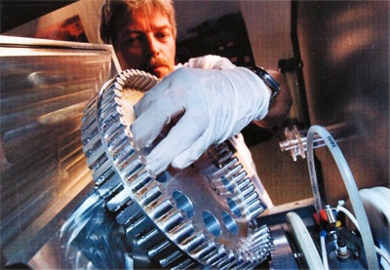Research project
Climate Change and Natural Isotopes
This project, under the supervision of Prof. Dr. Hans van der Plicht, comprises several studies aimed at the use of isotopes occurring naturally in organic material as tracers for both the climate change and its cultural impact at about 6200 BC. The research will be carried out by the co-applicant at the Groningen Centre for Isotope Research.

The research parts are:
(a) Radiocarbon: high-precision dating. This part concerns the exact timing of the concurrence of both climate change and cultural response by high-resolution 14C dating. The 14C project is specifically designed for the proposed research programme and elaborates on techniques of high-precision 14C dating under stringent quality control that were successfully applied earlier at Tell Rehov in Israel (Bruins et al. 2003; Van der Plicht & Bruins, in press). It comprises the use of carefully selected samples (single-year grains) from well-defined strata of occupation, subsequent 14C dating with the highest possible precision (employing both 14C-radiometry and 14C-mass spectrometry), and, finally, statistical (Bayesian) analysis in conjunction with the archaeological stratigraphy and the new calibration curve (Reimer et al. 2004). The project aims at a decadal temporal resolution.
(b) Stable isotopes: climate, diet and migration. This is a study aimed at the tracing and interpreting of data relative to palaeoclimate, diet and migration (cf. Müller et al. 2003), by means of stable isotopes of the lighter elements carbon, nitrogen and oxygen (13C, 15N and 18O).
(c) Climate modelling. The analyses mentioned above will yield a wealth of climatic proxy data, which will serve as essential input for modelling the climate change at 6200 BC. They will enable the fine-tuning of existing climate models. The climate modelling will be performed in close collaboration with an expert in this field: Dr. H. Renssen of the Free University Amsterdam (cf. Renssen et al. 2001).
The study consists of three parts:

(1) The 13C content in bone collagen characterizes the bone material in terms of diet (Richards et al. 2003) and climate (Van Klinken et al. 1994) in the past. 13C variations in cellulose are also good tracers for climatic variations (Trimborn et al. 1995). Increased stomatal closure during periods of drought leads to elevated 13C/12C ratios because the reduction of CO2 diminishes the photosynthetic isotope discrimination. A general relationship between 13C and both temperature and humidity can be derived.
(2) The stable isotope 15N is, in combination with 13C, a key parameter for palaeodietary studies (Kohn 1999). Their combined signal, measured in animal bone collagen, serves to chart the trophic chains. Both isotopic contents increase stepwise through the food chain from primary producers (e.g. grasses) via primary consumers (e.g. herbivores) to secondary consumers (e.g. carnivores). Through time, the patterns may change, because of alterations in food sources due to migrations or climate change (Bocherens 2003).
(3) Measurement of 18O in phosphate mineral in fossil mammal bones and teeth allows the reconstruction of the mean oxygen isotopic composition of palaeoenvironmental waters during the lifetime of the analysed animals. This enables us to reconstruct temperature in prehistory, which is a useful proxy in climate studies (Longinelli 1995).

In addition, there is a pilot study using Strontium (Sr) isotopes, in collaboration with the Free University Amsterdam (Prof. G. Davies). Isotopic changes in Sr in fossil bones and teeth of animals and humans may serve as a proxy for animal migration in association with environmental shifts: the teeth signal is representative for the childhood area, whereas bone reflects the region of adult life (Hodell et al., in press).
